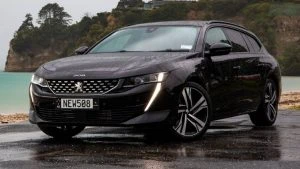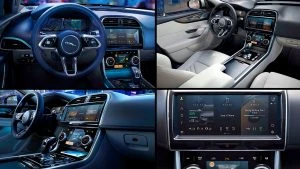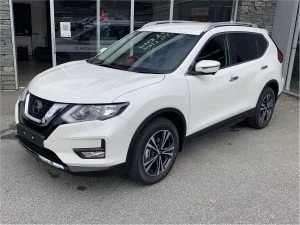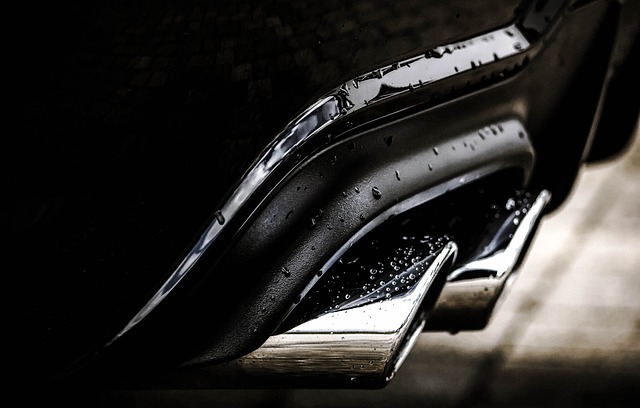Archive for April, 2021
Will Vehicle Carbon Taxes be Revisited?
A few years ago, there was talk of a proposed ‘carbon tax’ on new vehicles by slugging non-compliant auto makers with fines in an effort to reduce emissions. However, it became very clear that such a move would leave the door open for car manufacturers to pass on these fines to motorists in the form of increased car prices. In the meantime, alternative fuel technologies like hydrogen, electric vehicles and hybrids have failed to catch on, while phasing out of diesel and petrol vehicles has essentially been limited to offshore markets rather than here in Australia.
Even if such penalties were to be limited to non-compliant vehicle manufacturers that fail to meet stricter emissions standards, the result would have a flow-on effect across the new car market, effectively reducing the notion of a free market and any ‘true’ choice that motorists have when it comes to having access to the vehicle they want.
The real matter at hand
However, for all the focus on the technicalities of the ‘tax’, the real matter is how we manage the environmental burden from vehicles in an equitable manner. Or should we be content in punishing motorists for driving cars that are less fuel efficient than their peers?
Recent examples would suggest anything but. After all, take a look at states like Victoria, New South Wales and South Australia and it becomes immediately apparent that road usage charges for electric vehicles loom as a distinct risk that could threaten the uptake of electric vehicles. That is one example where an equitable manner has been sought to apply to the use of our roads, but there is no denying it is also ‘punishing’ the sort of behaviour that we are trying to promote.
Nonetheless, back to the original tax proposal, and in many respects, it never really stood a chance. In some quarters, the measures were tipped to start as early as next year, however, the reality is, Australia’s new car market continues to be defined by the very makes and models that would theoretically be punished for falling foul of emissions standards. With our love for SUVs and dual-cab utes, should Australians be locked out of some of their favourite cars by virtue of significantly higher prices as manufacturers seek to offset the hit to their hip-pocket?

It’s also been stated a number of times that Australia often misses out on some of the ‘cleaner’ or more advanced iterations of certain vehicles from the European market due to the standards of our emissions and fuel quality. Again, however, costs are at the centre of the discussion here, and in a new car market that is finally seeing signs of life, would industry players want to potentially derail this when a number of supply-chain issues have already weighed on upwards momentum?
All up, however, we do have some reason to be concerned about motorists holding onto their vehicles for longer – in the process, increasing the average age of cars on our road. Not only does this serve little to stimulate the economy but it won’t do much to tackle emissions across the nation’s entire fleet.
Several years on, are we actually any closer to answering the question as to how we encourage auto-makers to step away from higher emissions vehicles? Down under, it doesn’t appear so.
Cars For “When you get to my age!”
“When you get to my age…” is a statement commonly made by those of us who may well be getting on in years. Older drivers will likely have more to consider when they come to buying themselves a new car. The need for lots of power may not be such a deciding factor either, and comfort and safety might be the attributes you’d be needing instead. It can also be a fun time buying the new car because you haven’t got all the family commitments to keep in the back of your mind, which would otherwise have swayed your choice of car in the past.
The list of new cars below has been put together with the ‘oldies’ in mind but it by no means is definitive. It is nice to have a practical car which will take the grandkids out to the park or off to the zoo, but these cars also have comfort, reliability, decent space, good safety features, easy infotainment technology and good climate controls. You’ll also find that the following cars are pretty economical and reasonably easy to get in and out of.
The Peugeot non-commercial range of cars are fine cars with style, comfort and practicality. They offer five-star safety and good pricing. Who says motoring has to be boring!

Peugeot 508 Wagon
Toyota’s Camry, Corolla, or RAV4 models are well-priced, safe, efficient and reliable. Lexus models are premium Toyota cars with lavish comfort, excellent reliability, economy and safety.
The Subaru Impreza or Forester are a good go to car for practicality. Maybe you have a dog or need comfort and AWD traction. Their efficiency, safety and reliability have always been good.
Volvo’s new S60, XC60 or XC40 are sensationally comfortable, safe and lovely to drive.

Volvo XC40
Mercedes Benz B-Class range are a great package for comfort and practicality. The style is hard to beat, and they also have the amazing big infotainment screens that wowed the world.
Honda Civic or Accord cars are hugely efficient, reliable and comfortable cars.
Citroen C3, C3 Aircross or C5 Aircross are remarkably comfortable, practical and look cool.
Hyundai Kona has electric power and comfort leading the way, with practicality to boot.
Jaguar’s XE is a lovely car with everything an ‘oldie’ could wish for.

Jaguar XE
Renault has the Captur model range that provides classy SUV looks, outstanding comfort and safety, practicality and nice solid driving dynamics.
Skoda’s entire range of cars are comfortable, well-priced and spacious. Superb models are very stylish and they come in sedan and wagon. There is a model for everyone.
Nissan Qashqai and X-Trail variants are very comfortable, safe and practical; they also offer one of the better SUVs in AWD form with decent go anywhere ability.

Nissan X-Trail
The 2021 World Car Of The Year Is…
Volkswagen’s ID.4. The electric SUV is the German brand’s fifth WCOTY after: 2013 World Car of the Year – Volkswagen Golf, 2012 World Car of the Year – Volkswagen UP!, 2010 World Car of the Year – Volkswagen Polo, 2009 World Car of the Year – Volkswagen Golf VI.
It’s still unclear as to whether it will make its way to Australia. What will be unavailable is a 77kWh battery, offering a range of up to 520 kilometres. Power is rated as 150kW and torque at 309Nm providing a 0-100kph time of 8.5 seconds. The rear is where the engine is located. Battery charge from a 120kW DC source can provide 320 kilometres of range in a half hour, and the 11kW charger built in can provide 53 kilometres in an hour.

It’s expected that a dual-motor version will be released with power bumped to around 225kW. Chassis wise, it’s a bespoke EV design, and on a length of 4,580mm, it sits neatly between VW’s Tiguan at 4,486mm and the Tiguan Allspace, a seven seater and 4,701mm in length. Crucially, it will offer cargo space of 543L (rear seats up) to 1,575L (seats folded), offset against the Tiguan’s 615L/1,775L and the Allspace’s 230L and 1,655L. Up front is a cargo area of sorts, with the cargo being the 12V battery for the ID.4’s ancilliaries and accessories, plus the various cooling system equipment parts.

ID.4 will be built across three continents and in five factories, highlighting the still “Dieselgate” beleaguered company’s move to a stronger EV presence in a market that is growing worldwide.
Ralf Brandstätter is the CEO of Volkswagen, and he firmly believes in positioning this EV as a mainstream model “with the potential for significant volumes.” Those volumes, he says, are in in Europe, China, and North America. The ID.4 will also “play host” to a range of related brand vehicles from Skoda, Audi, and Cupra.
Future versions of the ID.4 are said to include all-wheel drive and a choice of both batteries and engines. These include a 109kW, 125kW, 129kW or 150kW rear-mounted electric motor with a 52kWh battery the power source for the first two, and a 77kWh battery for the latter. This battery
will also be the source for two all-wheel drive versions, with either 195kW or a mooted GTX packing the 225kW engine.

Will we see new types of cars after COVID?
There is sufficient reason to believe that cars of the future may well incorporate new design principles in the wake of COVID-19.
At least, that’s the view according to various car manufacturers, who have begun to envisage a different future for the automobile after the disruption caused by the pandemic, as well as the impact on supply chains that are so critical for vehicle production.
What changes are being touted?
Vehicle design could be in for a significant overhaul it would seem…albeit perhaps not just yet. Nonetheless, what will be a key driver, at least based on early discussions with car designers thus far, is how the mindset of drivers will influence tomorrow’s generation of new cars. And amid the changes of the last year, there can be no denying that the mindset of the modern driver now has other needs that would have seemed inconsequential 12 months ago.
More specifically, however, things like anti-viral coatings could become standard on interior surfaces. This is an area that both Kia and Hyundai have identified as a potential need in the future as they work on “virus-proof” cabins through the use of self-sterilising materials. What’s more, there is even some talk that the way to achieve this could be through the possibility of using temperature and ultraviolet light to sanitise surfaces.

Will the format of the car change as we know it?
At first there was also some train of thought that social distancing behaviour could also give rise to a new breed of vehicles, which would be short-range micro electric vehicles. These would effectively act as a supplement to other forms of transit such as public transport, bicycles and walking. Rather than an all-in-one motoring solution that many brands have tried to embrace through SUVs, and more recently, crossovers, this type of vehicle would be designed more simply as functional units, without the necessary frills that we’ve come to expect in all of the latest-release cars.
However, the trend of new car buying throughout the pandemic has almost universally opposed this notion. In fact, buyers continue to flock to bigger and bigger cars, perhaps spurred on by the fact that they now want to travel longer distances and in more diverse environments. Naturally, it’s no surprise then that SUVs and dual-cab utes are dominating the market with their 4×4 capabilities, let alone spacious cabins and large cargo holds.
There is no denying that recent trends up until COVID-19 were all about shared mobility and peer-to-peer service. With that turned on its head in recent time as we stay at home and keep our distance from others, there is also likely to be some attention shift towards how the internal cabin connects all of the vehicle’s occupants. It is distinctly likely that cars will need to prioritise a more deliberate design when it comes to shared mobility, at least for the purposes of helping us uphold the momentum as far as the shared mobility trend.
Now a full year on from the onset of the pandemic, new observations keep leading to new possibilities. What do you see ahead?
